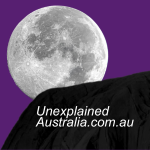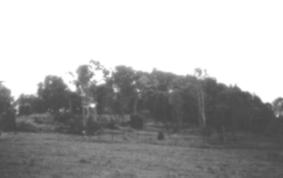
Another pre-Cook Shipwreck?
by Murray Byfield
In 1989 Greg Jefferys, Australian archaeologist and historian, began searching for the wreck of a supposed Spanish or Portuguese galleon on Stradbroke Island QLD Australia. He believes that he is getting very close to finding the remains of the wreck. If found, this wreck could rewrite the history books of who "discovered" Eastern Australia.
The mysterious remains of the ship have been reported in 18 Mile Swamp, generally situated near Swan Bay or Jumpinpin. Over that time there have been dozens of reported sightings but still the mystery remains.
Jeffrerys points to the discovery of a Sailors dirk, a brass walking stick head, a brass button, a sword blade, a fishing weight and a corroded silver coin dated 1597 on Stradbroke Is as evidence of the existence of a Portuguese or Spanish Galleon buried in the 18-mile swamp.
Mr Jefferys claims he found the artifacts about 900m inland, suggesting the ship had gone aground hundreds of years ago and the island's sand had built up around it.
Rumors of Aboriginals "trading" with Spanish Coins and the subsequent circulation of these coins in the community also adds weight to his theories.
Other testimony includes: Aborigines "knew of shipwreck" for centuries.
Frank Boyce, who lived there in the 1920s and '30s, was taken to the wreck by Aborigines after he saved the life of an Aboriginal woman who was drowning. And claims they told him they had been taking the gold over the years to pay for things in town.
A theory has been put forward that Captain Cook used secret Portuguese or Spanish maps to aid his discovery and navigation of the Pacific and Australia's east coast. Could the Stradbroke Island Galleon prove this theory?
Are the remains in the 18 Mile Swamp a lost Portuguese or Spanish galleon? Is it a Mexican treasure ship, a Manila Galleon carrying millions of pesos in silver and gold coin, that was shipwrecked on Australia's Queensland coast?
The Queensland shipwreck is likely to be of either Portuguese or Spanish origin although there is a slight chance it may be a VOC (Dutch East Indies Company) shipwreck in Queensland.
If it was a Manila galleon or a V.O.C. ship, there may be some truth to the stories of a vast treasure buried somewhere on Queensland's Stradbroke Island.
Matthew Heeb discovered the burnt remains of a ship in the Eighteen Mile Swamp on Stradbroke Island in the Vicinity of Swan Bay at Jumpinpin in the early 1890's (before the Jumpinpin breakthrough). He described it to Isabel Hannah and the honorable George Appel (M.P.) as having a high poop and forecastle. It is likely that the remains pictured above represent exactly the type of ship that Heeb saw. Unfortunately since Heeb saw the shipwreck in the 1890's several fires have burnt over it. In !934 Jim Walker and two friends found the remains again, after a fire had burnt through the 18 Mile Swamp and during a drought.
The fires had reduced the "above swamp level" visible parts of the shipwreck to just its heavy timbers, though Jim Walker could still confirm that the wreck was of a ship of about 90 to 100 feet in length (about 30 meters). This would make it a ship of the size of Captain Cook's Endeavor or a ship of 350 to 400 tonnes. Small for a Manila galleon but large for a carrack or a Caravel.
When Heeb found the wreck in the 1890's he removed over a hundredweight (about 60 kilos) of copper fittings from the land locked shipwreck. In 1934 there were still various artifacts still to be found by scratching around in the hull. Using an axe Jim Walker took a "roved" bolt out of one of the ship's heavy timbers; Dr Harold "Boy" Young scratched around in the remains of the burnt out hull and found the fine dirk with an antler handle (mentioned above).
Mr Jefferys has recently accepted an offer from geophysics company UltraMag to do a free spectral analysis of the swamp. The scan, which normally would cost about $20,000, should detect the presence of any metals in the swap's vegetation.
If Mr Jeffery's theories are proven to be correct it will be interesting to see the reaction from history and archeology scholars. Will the history books be rewritten or will the truth be swept under the rug and be conveniently overlooked in Australian History texts?
Visit The Legend of the Stradbroke Island Galleon to purchase Greg Jeffery's Book and DVD on the Stradbroke Island Galleon Mystery
http://www.stradbrokeislandgalleon.com
http://www.stradbrokeislandgalleon.com/index.html

